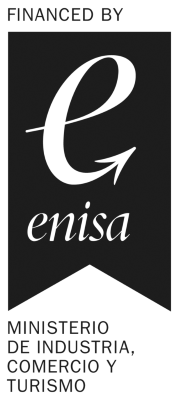Whether it is a brokerage, an insurance company, an agency… planning objectives should be a mandatory task in order not to lose focus. Often, among these objectives is that of addressing certain marketing actions and achieving certain results.
Given the importance of these objectives and how they can be decisive in the development of the business, today we want to talk in detail about the insurance marketing plan.
What is an insurance marketing plan?
The marketing plan is a document that contains everything related to the marketing of our insurance business. The situation in which we find ourselves, the objectives we want to achieve, the strategies we are going to use for it, the time in which it is going to be carried out, how we are going to measure the results… Normally it is elaborated with a year of validity, although we recommend reviewing it periodically to check that it is complying with what has been set.
Given the importance of this guide, it is common to find a summary within the company’s own Business Plan.
Why is it important to draw up an insurance marketing plan?
Marketing is characterized by measuring practically everything that happens both within and around the brokerage or insurance company. This is the only way to find lines of improvement in terms of customer experience, insurance offered, methods of action, the way we communicate…
Of course, in order for the actions carried out to make sense, it is necessary to carry out prior research into the internal and external situation of the business.
We can therefore say that a marketing plan is important for the following reasons:
- It helps to know the market share and to have a more detailed picture of the insurance industry
- It keeps competitors in mind
- It reminds us who our buyer persona is
- It helps us to land the communication strategy and the actions to be carried out
- Helps us not to lose focus by setting deadlines to achieve objectives or carry out actions
- Gathers the resources we have available for each of the actions.
Objectives in an insurance marketing plan
Once a study of the company’s situation has been carried out, it is time to set the objectives or goals and the deadlines by which we should achieve them.
A good technique to set them is following the SMART formula, which recommends that these objectives should be:
- Specific
- Measurable
- Achievable or achievable
- Relevant
- Defined in time or timed
Example of objectives that follow this formula: improve your insurance advertising conversion rates by 25% in one year.

Basic structure of an insurance marketing plan
In order to properly develop the marketing plan, it should have the following structure:
Analytical marketing
With the initial research we have already mentioned, which takes into account the company itself, the market and the competitors.
The information gathered in this section is the most relevant, since it offers an objective view of the situation of the brokerage or insurance company with respect to competitors and the current socioeconomic situation. Thanks to this, you will be able to clearly see possible ways to differentiate yourself and develop a SWOT analysis (weaknesses, threats, strengths and opportunities).
As for the factors to take into account, we recommend that you keep at least the following in mind:
- Most significant characteristics of the company
- Political, economic and social situation of the sector. For example, the digital transformation that insurance is undergoing
- Aspects to take into account of the target audience
- Positive and negative characteristics of the competition
Some of the sub-sections of analytical marketing could be:
Internal analysis
Collects in detail everything about the brokerage or insurer that can affect the approach and business development:
- History of the company and its insurance
- Strategic mission
- Internal organization chart
- Production capacity. You should determine if your business can meet all the demand it receives and if not, consider the possibility of having insurance software to help you increase production capacity.
- Financial capacity
- Commercial capacity and structure
- Market size and target audiences
- Distribution channels used and to be used
These will allow us to establish the strengths and weaknesses of your insurer or brokerage to later develop your own SWOT matrix.
Socio-economic and legal analysis
Reflecting the macro-level situation affecting the brokerage or insurance offered. It is essential to include these two points:
This will help us to know what is the situation from which the company starts (economic crisis, local, regional, state or European financial situation, etc.) and by which regulations it must be governed.
- National and international legal regulations
- Socio-economic factors affecting insurance. Economic, social, cultural, political situation…
Consumer analysis
This is one of the most relevant points for the development of our marketing plan. Here we should include demographic information, global and potential volume, purchase roles, possible levers or purchase objections…
It would be the ideal place to locate all the information relevant to the buyer persona mentioned above.
Competitor analysis
As is obvious, knowing our competition and taking it into account is essential when defining and approaching an insurance marketing plan.
To do this, we recommend that you gather as much information as possible and analyze them competitor by competitor:
- Who are the strongest
- What do you have in common with them
- Main differences
- Structure of your website
- Message and style
- Actions they are carrying out in social networks
- Target audience
- What appears when we search on Google
- Star products
- Distribution channels
- Most used CRM for insurance
- Geographic scope of action
- Pricing policy
An example of division could be direct competition, organic competitors, competitors that have decided to sell insurance on social networks…
Market research
Although it is not always possible, the ideal here will be to carry out a study on the evolution of sales in the insurance market over the last five years, with business figures of the main competitors and their market shares.
This will help us to calculate market shares by type of insurance, study the volume of premiums written according to geographical area and specify the seasonality of sales and quotes.
Commercial study on the product
Gathering all the information on the brokerage or insurance company, brand awareness, life cycles, prices, purchasing processes and possible complementary and substitute insurance products.
Analysis of distribution channels
As extensive as it may be to carry out this study, having detailed information on which are the most used, what profitability each one achieves and what is its geographical distribution can be of great help when establishing any objective or strategy to be carried out.
Strategic marketing
With the strategy to be followed to achieve the set objectives, it will help us to align our actions with the objectives set. To do this, we must take into account the following points:
Marketing strategy
Of course, this section may vary depending on the insurances you work with, the type of insurance business you are and the business and marketing objectives you have in the short and long term.
To set the marketing strategies for selling insurance to be implemented, we will bear in mind the objectives set and ask ourselves how to achieve them.
Segmentation in the marketing plan
As in the competitive analysis, there are several ways to segment the audience. According to demographic data, quantitative information, psychographic information, needs… Always depending on the type of insurance we are working with and the objectives already established.
Segmenting will allow us to identify all the consumer profiles we are going to target, adapting the marketing strategies to each one and understanding the behavior of each one.
Positioning
It is essential to find a competitive advantage that positions us in some way within the insurance market. Prices, customer service, experience in insurance of a certain branch, agility when it comes to giving prices, web with embedded insurance?
Operational marketing
The main part of any marketing plan. The most used way to organize the strategies and sections is by resorting to the 4Ps of the marketing mix:
- Product
- Price
- Distribution or place
- Communication or promotion
However, to carry out a marketing plan you need even more than that, that is why we include the following points:
Product policy
How are the insurances we work with, do we offer advice, are there complementary coverages for these insurances? We must also not forget the production costs.
Pricing policy
A decisive factor in terms of positioning in the market with respect to the competition. However, we must never forget that our price must cover all costs and guarantee a margin.
Distribution policy
You will collect the distribution policy of your insurances and the reasons for the choice of these channels. Of course, including information on the expected results of each channel, costs…
Sales policy and commercial organization
Detailing the sales expectations both in the short and medium term, the sales structure you will need, the sales argumentation, sales levers (e.g. offers and promotions), the costs of the area…
Communication policy
Bringing together the communication objectives, the global strategy and the proposals for marketing actions to be developed. Key points in this section usually include:
Copy strategy and reason why
You will express the benefits that your brand and your insurances promise, building the arguments of why to contract with your brokerage or insurer.
Digital marketing strategies
As we have already said many times, it is increasingly important to have an online presence and to bet on innovative ideas to sell insurance on the Internet. Following the logic of other sections, you will gather the objectives and strategies to be carried out. Among the many topics to be covered in this section, some that could be relevant would be:
- Web. If you don’t have one yet, you should create an insurance website as soon as possible and start working on it. It will be one of the first steps to start selling insurance online.
- SEO and SEM strategies. This will be the most effective way to start getting visitors to your website. However, it is essential that you make sure before bringing any traffic that the look and design of your website is good, so we recommend using WordPress templates for insurance websites.
- Strategies in social networks.
As in other sections, remember to reflect the time of action and the expected results with any action.
Implementation timeline
It is very important to place all the proposed actions within a time frame, including from the moment the plan is designed to the completion date. This is the only way to know how to structure each of the campaigns and to implement them with no margin for error.
Economic plan
Here you will be able to demonstrate your marketing plan. We recommend you break it down as follows:
- Overall marketing budget
- Financial needs
- Expected renewal rate
Review of the work done for the insurance marketing plan
It will be necessary to review the execution of the marketing plan that has been developed and regularly monitor the results that are being obtained. To do this, you must have systems for controlling and monitoring results.
Keep in mind that the more information you have, the more control you will have over each of your marketing actions and the better your objectives will be.
Thanks to a constant review, you will be able to check if the objectives have been realistic and, if necessary, reformulate the strategies.
Main mistakes to avoid when creating an insurance marketing plan
Finally, given the frequency with which they are made, we would like to list a series of common mistakes to avoid in any marketing plan.
Not carrying out market research
Although the analytical marketing part is usually the most tedious due to the large number of variables to take into account, it is one of the most important.
As is evident, those who do not know our insurance or our company will have a completely different perception compared to those who are already our clients. Added to this is the variable of geographic location, which can also give us clues as to the needs and concerns of our target. A lot of information to analyze, right? Even more so if we take into account that we have only taken into account two variables out of the many that may exist.
Strategies and objectives not communicated to the team
A very common mistake is not communicating the objectives of the brokerage or insurance company to the team working in it. This will not only cause them to work without focus, the level of involvement will also be minimal.
The most effective solution to this problem will be the use of internal communication and organization tools such as Trello, Slack, etc., which, in addition to allowing you to work in the cloud, will prevent messages from being lost.
Not quantifying objectives
We will not be able to know the effectiveness of our plan if we cannot check the results. Every marketing plan has both quantifiable and qualifiable objectives and, as it is evident, measuring quantifiable results will always be much easier than qualifiable ones; which will be based on satisfaction surveys, reputation reports… and which give rise to interpretation.









